Cloud Computing Trends 2023
Since its beginnings, cloud computing has been a game-changing technology that has allowed businesses to transfer their expenditure from pricy on-premise infrastructure needed for demanding computing activities to an affordable service offered by knowledgeable data centre personnel. With this change, it will be simpler to ramp up or down work in accordance with shifting business requirements and to have a more predictable computing budget.
Using the cloud also helps businesses to spend less on the area, personnel, and auxiliary equipment required to run an on-premise computing network. Also, compared to on-site computing methods, cloud computing offers a higher level of protection.
Artificial intelligence (AI), the internet of things (IoT), virtual and augmented reality (VR and AR), the metaverse, and other technologies all have their roots in cloud computing. Consequently, changes in cloud computing are important to follow if you wish to grasp the world of technology today. We highlight a number of developments that are expected to persist and change in the upcoming year in the sections that follow.
Security
The first and most significant exclusion from the advantages of cloud computing is security. While moving their computing infrastructure to cloud settings, businesses must be always attentive about the possibility of cyber threats. However, new rules and regulations are created frequently, thus any security risk also poses a risk to a company’s financial stability because failing to maintain effective security processes could result in fines and other penalties.
Cloud cybersecurity will therefore receive a lot of attention in 2023. Businesses shall take action to safeguard client data and adhere to institutional and regulatory regulations. They will make use of cutting-edge tools like AI and predictive analytics to spot hazards early—perhaps even before they become a problem. One result of this procedure will be security as a service.
Multi-cloud & Hybrid Cloud

According to the specialisations they require, a corporation employing a multi-cloud strategy will use services from a number of cloud providers. They might, for instance, use one supplier mainly for development and another largely for storage. While using the cloud, hybrid cloud refers to keeping some functions inside of a private computing infrastructure. Both of these tactics give businesses a significant degree of flexibility and can be employed in any combination.
These strategies can also include a redundancy component and shield businesses from relying solely on one supplier. If providers alter their business practises, such as switching to a different focus or shutting down entirely, it is advantageous to have options available. In order to improve quality or lower expenses, it also enables businesses to modify the location of where they run containerized applications.
In 2023 and beyond, many businesses’ cloud plans will continue to include both multi-cloud and hybrid cloud solutions.
You can also read about Cloud Migration Strategy
Cloud Native
The term “cloud-native approach” describes the practise of creating programmes, services, and other digital products entirely within the cloud. Companies will use this method more in the future because many of these solutions can operate more effectively in the cloud. Also, enterprises will be compelled to embrace this strategy due to the growing use of containers in particular.
The main advantages of a cloud-native development strategy include greater productivity through the use of tools and cloud services, lower costs because physical infrastructure is not needed, and guaranteed availability due to the dependability of cloud-based services. Due to these benefits, more businesses will adopt the cloud-native methodology in 2023.
Applications built for the cloud typically use microservices, which are smaller services. Applications developed using this method are more agile, need less time to develop, and use less computer power to operate. Due to these advantages, firms that seek to increase their flexibility, efficiency, competitiveness, and cost-effectiveness can profit from adopting a cloud-native strategy. The cloud-native strategy is further explained in the next video.
AI & ML

Given the significant resources required to create and maintain internal infrastructure that is AI and machine learning (ML) enabled, the cloud is the ideal setting for services utilising these technologies.
Both the cloud providers and the businesses that employ these services rely on AI and ML services. They can assist with managing and keeping up the distributed networks required to provide these services to customers, including activities involving cooling, electricity, and cybersecurity.
“In 2023, we predict ongoing innovation in this space as hyper scale cloud service companies like Amazon, Google, and Microsoft continue to deploy their own AI technologies to develop more effective and affordable cloud services for their clients,” says futurist Bernard Marr.
Edge Computing
Edge computing refers to the use of computers for processing data at a distance from the source. In order to assist people and organisations use energy more effectively, utilities may, for instance, examine data from sophisticated metering infrastructure technology using edge computing. Edge computing improves efficiency, especially for IoT devices, by reducing latency. It may be more secure if it is isolated from other network nodes.
Although the processing is done “on the edge” with this method, certain data may still need to be routed for additional processing or storage. Strong cloud participation is necessary for that step of the process. Edge computing is another cloud computing deployment that will be popular due to the continued growth of IoT devices and other use cases.
Low-code and No-code
No-code software development is the use of tools that make it possible for anyone to put together websites, apps, databases, analysis tools, and more without knowing how to code. Low-code development refers to the same procedure, with the exception that minor element modifications may necessitate some coding, making it more versatile than no-code.
The cloud offers many no-code and low-code services, including apps like Figma, Airtable, and Zoho. In 2023 and beyond, as more businesses become used to the idea of citizen developers — employees of various roles who design digital tools on their own instead of waiting for professional developers to do so — they will depend more and more on these tools.
Cloud Gaming
A number of well-known corporations, including Microsoft, Sony, NVIDIA, and Amazon, provide streaming video gaming services. In certain cases, these services are hampered in part by slow internet speeds. However, 5G deployment is anticipated to increase in 2023, along with other networking innovations that may significantly help with the speed problem.
Moreover, providers are developing their own solutions. The technology that underpins Stadia, according to Bernard Marr, “will live on as the foundation of an in-progress B2B game streaming service that will enable game makers to give streaming capability directly to their consumers.”
Public Cloud

Private clouds, public clouds, or hybrid cloud arrangements—which combine the two—can all be used by businesses. A private cloud is one whose resources are exclusively allocated to a single business. A public cloud is one whose resources are shared among numerous businesses to offer services.
In that you “pay rent for a single unit,” “The building manager manages the upkeep,” and “You share the overall space with other tenants, with security surrounding your own possessions,” using a public cloud can be compared to renting an apartment, according to Google Cloud. It’s not a completely accurate comparison because, unlike a cloud service, an apartment cannot be expanded to add more space. Yet “you may simply scale up a ‘public cloud’ flat into a mansion…and scale back to an apartment the next day,” according to the author.
Public cloud choices are expected to grow in 2023 as a result of their comfort, security, and affordability.
Serverless
Developers can create and operate containerized apps in a computing environment using the serverless development methodology without having to worry about managing servers. It’s crucial to realise that servers are still a part of the serverless model. However, they are unrelated to the creation process, and the server infrastructure is provisioned, maintained, and scaled by the cloud provider.
Developers may concentrate on building and deploying apps inside the containers. The serverless application provider can continue to execute the apps as needed after they have been launched, scaling them up or down as necessary. One illustration would be batch picture file processing, which while not necessarily required regularly, must be available when required.
More developers will probably use serverless computing in 2023 because it primarily increases developer productivity while lowering costs.
Desktop as a Service

Cloud-based solutions are necessary to continue to be effective since many businesses are sticking with the remote work patterns they chose during the epidemic, and more are migrating to a hybrid model (where team members are in the office and remote at different times). In 2021, “almost 80% of workers are using collaboration technologies for work, up from just over half of workers in 2019,” according to Gartner.
That represents a 44% increase since the outbreak started. The number increased even more in 2022, and it will probably keep growing through 2023. Desktop-as-a-Service technologies are extremely safe and practical, enabling employees to carry out duties whenever from anywhere with an internet connection in addition to their utility in supporting document management, communication, knowledge management, and more.
XaaS

Networks, storage, and security are just a few of the online services that can be offered thanks to cloud computing. The term “everything as a service” or “XaaS” refers to this phenomena. Professional services is one market that is utilising XaaS to its fullest potential. The Future of Consumer Interaction and Experience reports that “companies are combining people-based services with digital skills, data, or assets. The concept enables corporations to pay for results rather than time invested while enabling professional service providers to increase their capabilities.
IoT
Cloud computing is necessary for the IoT to function. IoT devices are designed to gather data. Once the data is gathered, it needs a place to go where it can be processed, examined, and stored. This analysis and storage are often done in a cloud-based environment. For IoT applications, using the cloud for this processing and storage results in a higher level of data security.
The ability to link different devices via the cloud can also be enabled for IoT networks. Also, IoT capabilities and data processing can be readily enhanced or decreased in accordance with business demands, just like other cloud-based activities. In 2023, there will need to be an increase in cloud computing due to the anticipated explosion in IoT device numbers in the upcoming years.
High-level Benefits
Cost savings, safety, ease of use, flexibility, better functionality, innovation, and end-user benefits are just a few of the many advantages that these trends offer. FinOps procedures, for instance, can assist businesses in controlling their cloud spending. The amount of security that businesses can experience while using cloud services can be increased by security features and sovereign clouds. The availability of public cloud services, serverless solutions, and infinite storage can simplify the use of the cloud. Moreover, hybrid cloud and multi-cloud options increase business flexibility.
Conclusion
Nettyfy Technologies offers customized cloud services that combine our subject-matter expertise, business acumen, and cutting-edge technologies to hasten your objectives. You can expand the reach of your business with the assistance of our educated employees, in-depth industry knowledge, cutting-edge equipment, and end-to-end support. Contact us today for any cloud app development services; we have the expertise to work with any kind of requirement with 100% satisfaction.


